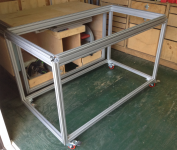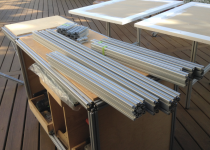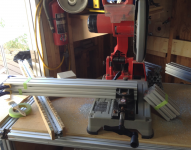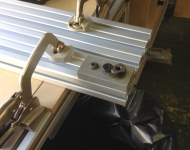Richard,
I am sure your shop will have many sensible innovations. I will be watching closely.
I am with those who wood go with the 45º French Cleats. With 3/4" half lap there wood be a chance for the cleat tongue to rip off. A very minor split will have a tendency to travel. with very straight grained wood, it could travel the length of the cleat. If using plywood and ripping cleats, you end up losing a lot of strength at the lips of the cleats.
I am planning to build (redo) my own shop and like the FC system. I have almost no wall space along one wall and am planning to construct 2'x3'(+/) cabinets/shelves, some with doors that also contain tools or whatever. There could be a lot more weight than I might wish to hang on a T&G type of cleat. I am sure, from experience, that once I have rearranged all on FC's I will think of a better (?) arrangement and rearrange again. and again and................
I think the angled cleats will stand up to my own bad habits much better.
Tinker
I am sure your shop will have many sensible innovations. I will be watching closely.
I am with those who wood go with the 45º French Cleats. With 3/4" half lap there wood be a chance for the cleat tongue to rip off. A very minor split will have a tendency to travel. with very straight grained wood, it could travel the length of the cleat. If using plywood and ripping cleats, you end up losing a lot of strength at the lips of the cleats.
I am planning to build (redo) my own shop and like the FC system. I have almost no wall space along one wall and am planning to construct 2'x3'(+/) cabinets/shelves, some with doors that also contain tools or whatever. There could be a lot more weight than I might wish to hang on a T&G type of cleat. I am sure, from experience, that once I have rearranged all on FC's I will think of a better (?) arrangement and rearrange again. and again and................
I think the angled cleats will stand up to my own bad habits much better.
Tinker




